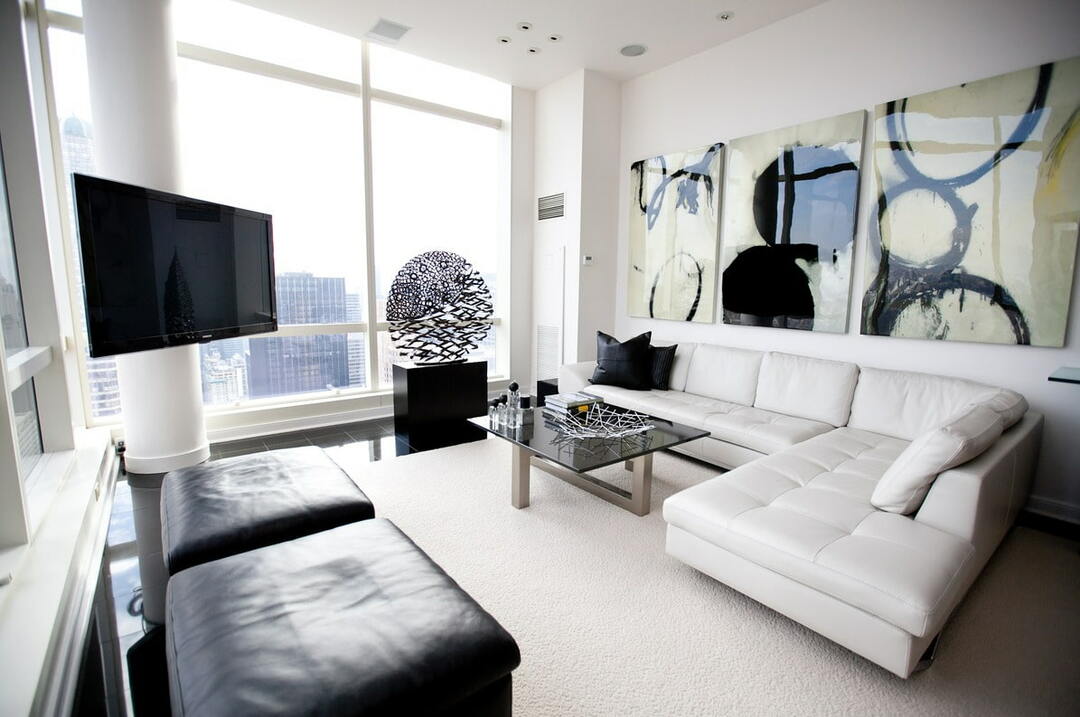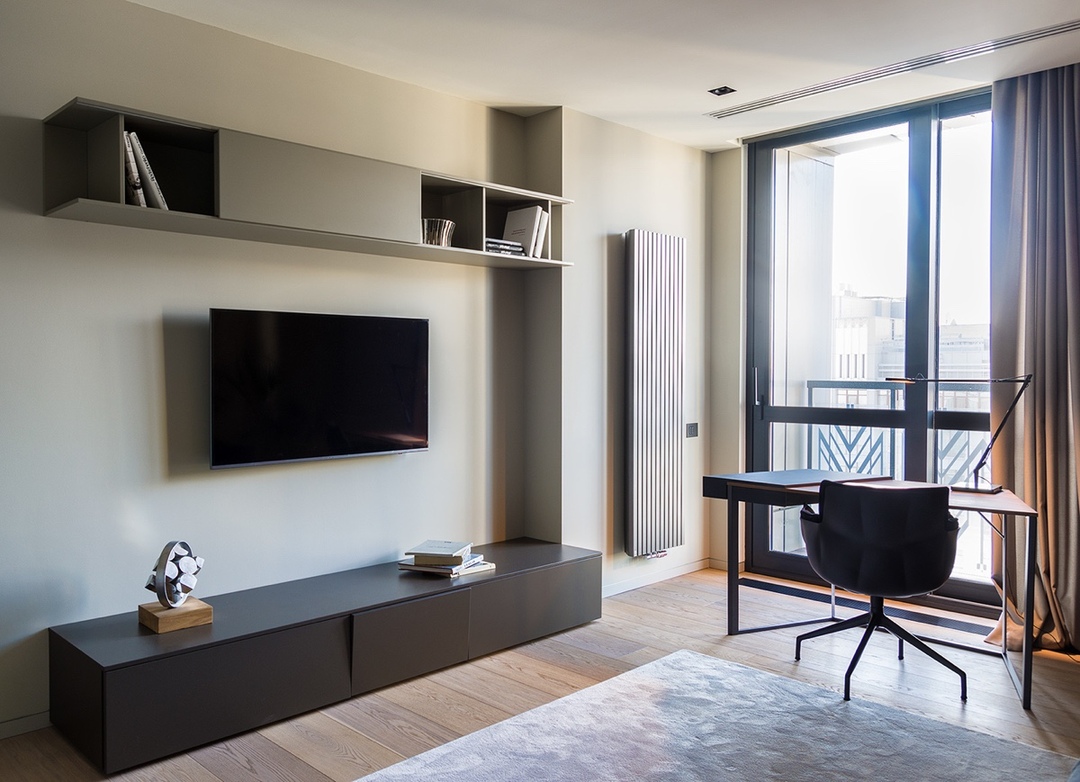What to do if the house or summer cottage needs heating, but there is no gas or electricity there? Get a solid fuel boiler, of course. And so that you are not mistaken with the choice, we will tell you what to look for when buying such a boiler, and we will make our own independent rating of the 8 best solid fuel boilers.
CONTENT
- 1 Types of solid fuel boilers
- 2 What to look for when choosing a gas boiler
- 3 Rating of the 8 best solid fuel boilers
- 4 FAQ
Types of solid fuel boilers
Solid fuel boilers are different, and each type has its own characteristics:
- Classic. These are the most common boilers that heat water by burning almost any solid fuel in the furnace and throwing combustion products into the chimney. The efficiency of such devices is usually 80-90%, but they are inexpensive and unpretentious in maintenance.
- Pyrolysis. In boilers of this type, the fuel does not just burn - in their closed furnaces the pyrolysis process takes place, the same as in the manufacture of charcoal. Oxygen access to fuel is limited here, and the temperature is much higher than in classic boilers. Not only the solid fuel itself is used, but also the gas that is released during the pyrolysis process, so such boilers give almost no waste, their efficiency is very high, but they also cost much more than traditional ones.
- Long burning boilers. In terms of their design, these boilers are closer to pyrolysis than to classic ones. Their feature is complete combustion of fuel, due to which it can burn for many hours, which is very convenient. The price of long-burning boilers is higher than the classic ones, but they definitely cost their money.
- Stand apart automatic boilers, the work of which is carried out without human intervention. The fact is that both classic and pyrolysis, and long-burning boilers require supervision: you need to throw firewood, you need to clean the ash pan, you need to monitor the temperature and perform a hundred other things as voluntary amateur fireman. Automatic boilers, in turn, do everything on their own. The operator's task is to fill the bunker with fuel from time to time (say, once a week), and the apparatus will do the rest by itself. Extremely convenient, although not cheap.
What to look for when choosing a gas boiler
Heat exchanger material. The most common options are copper, stainless steel, and cast iron.
Cast iron heat exchangers are distinguished by high inertness, that is, they heat up for a rather long time, but cool down just as long, as well as durability, indifference to rust and an acceptable price. At the same time, the high weight and fragility inherent in cast iron do not allow us to call this material ideal - rather, it is just classic.
Stainless steel is weakly susceptible to corrosion and is more ductile than cast iron, however, in terms of reliability, steel heat exchangers are inferior to cast iron ones, and retain heat much worse than them.
Finally, copper heat exchangers are the most expensive, but they are lighter than others and do not tend to corrode. As a rule, they are used in wall-mounted boilers.
Practice shows that the main thing is not the type of material used in the production of the heat exchanger, but its quality and correct operation.
Thermal power. The higher it is, the more heat the boiler can produce. An insufficiently powerful unit simply will not warm up the coolant to the desired temperature, but too powerful will work half-heartedly, wastingly transferring firewood. Usually, to determine the required power, it is taken for the truth that 1 kilowatt is needed to heat 10 square meters of a room. It is advisable to add 20-30% to this indicator on top, and you will get the desired value.
Efficiency. A high efficiency means that most of the heat generated from fuel combustion will go to heating the coolant, not the chimney. Usually, this indicator for classic boilers does not exceed 80-90%, and for pyrolysis and long-burning boilers it can approach 100%.
The number of contours. A single-circuit boiler provides the house only with heat, and a double-circuit boiler also provides hot water. The second option makes sense when you do not have a separate water heater.
Fastening method. Boilers can be wall-mounted or floor-standing - this usually depends on the weight and functionality of the boiler. Floor-standing models are usually heavier, but proportionally more powerful than wall-mounted ones.
Combustion chamber type. An open combustion chamber uses oxygen from the air in the room in its work, and the combustion products are thrown out through a traditional chimney. It is inexpensive, but not very effective, and besides, it requires the organization of a separate boiler room - in general, the classic version. A closed chamber, in turn, requires the organization of a coaxial chimney of the "pipe-in-pipe" type and a forced air circulation: through a small chimney, she pumps air from the street and throws out combustion products out. This is a more expensive, but also more convenient option, which does not require placing the boiler in a separate room.
Fuel used. Most boilers can use any fuel in their work: even firewood, even pellets, even coal, even dry leaves, even old tires. Different areas may have different materials most readily available at different times of the year, so be aware of your surroundings and be sure to clarify this before buying.
Energy independence. Traditional solid fuel boilers are non-volatile: they can work without access to electricity, you just need to light up the firebox. More modern models are equipped with electronic control, electric ignition and other functions that do not work without electricity. Be sure to take this into account when choosing a boiler for a remote home where there is no electricity.
Rating of the 8 best solid fuel boilers
The best double-circuit solid fuel boiler
1. Kiturami KRP 50A 38 kW
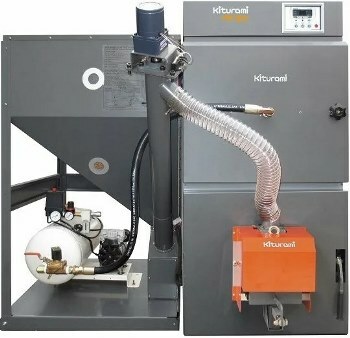
Classic double-circuit solid fuel boiler designed to work on pellets. It comes with an automatic hopper for 160 kg of pellets, which provides almost 30 hours of continuous work. The maximum thermal power of the unit is 38 kW, which, with an efficiency of 92.6%, allows heating a room with an area of up to 350 sq. M. Of course. such a powerful boiler is intended for floor installation and requires a separate boiler room. In addition to the bunker, the set includes a room thermostat, a built-in blower fan, a display and a remote control. Autodiagnostics, programmer, power-on indication, auto-ignition, overheating protection and thermometer are provided. The price of the issue is almost 280,000 rubles.
Price: ₽ 280 000
Kiturami KRP 50A 38 kW
The best pellet solid fuel boiler
2. ZOTA Pellet 15S 15 kW
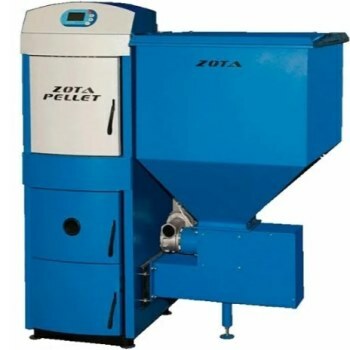
Another solid fuel classic boiler with an open combustion chamber, designed to work on pellets - pressed granules from plant materials. This time - single-circuit and with a maximum thermal power of 15 kW, which allows you to heat a room with an area of up to 150 square meters. The set includes a hopper with automatic feed of raw materials, a built-in blower fan and a display. In addition to pellets, it can also work on simple firewood, although the consumption will be slightly higher: 2 kg / h versus 1.58 kg / h. There is a possibility of connecting a warm floor and external control. Indication of inclusion, auto-ignition, protection against overheating, thermometer, pressure gauge are provided. For a price of 170,000 rubles - excellent functionality.
Price: ₽ 170 000
ZOTA Pellet 15S 15 kW
Best Pyrolysis Solid Fuel Boiler
3. Bourgeois-K MODERN-12 12 kW
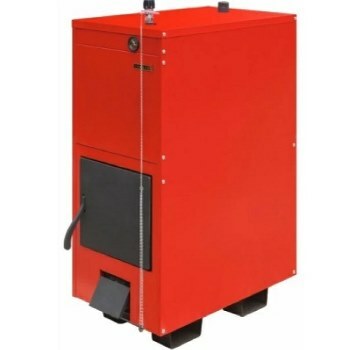
Single-circuit solid fuel boiler of pyrolysis type with an open combustion chamber. The maximum thermal power is 12 kW and, with an efficiency of 92%, it can heat a room with an area of up to 120 square meters. Mechanical control and lack of additional functions make this device non-volatile. The device can use coal, pellets, firewood, wood briquettes and even peat as fuel. Of the options, we can note the presence of a built-in thermometer and pressure gauge. The device costs quite acceptable 60,000 rubles.
Price: ₽ 60 000
Bourgeois-K MODERN-12 12 kW
Best Combined Solid Fuel Boiler
4. Viadrus Hercules U22 D-4 23.3 kW

Classic single-circuit boiler with an open combustion chamber, capable of operating in a combined mode. It seems that everything that burns can serve as fuel for it, regardless of the aggregate states: coal, pellets, coal briquettes, firewood, waste oil, natural gas, coke, wood briquettes. The efficiency, however, is low, only 80%, but the maximum thermal power of 23.3 kW is enough to heat even a large house. Non-volatile system with mechanical control, tanometer and pressure gauge. Cast iron heat exchanger. You will get all this wealth for only 66,500 rubles.
Price: ₽ 66 500
Viadrus Hercules U22 D-4 23.3 kW
Best Classic Solid Fuel Boiler
5. Protherm Beaver 20 DLO 19 kW

The most that neither is a classic solid fuel boiler, made according to a single-circuit scheme, with an open combustion chamber. With a maximum thermal power of 19 kW and an efficiency of 90.2%, it can heat a room with an area of up to 190 sq.m. The unit is non-volatile, mechanically controlled. The primary heat exchanger material is cast iron. The boiler can use coal and wood as fuel. Built-in thermometer and pressure gauge are provided. They ask for an impressive 55,000 rubles for this device, but it can serve for many years, so it will definitely pay off.
Price: ₽ 55 000
Protherm Beaver 20 DLO 19 kW
The best solid fuel boiler for long burning
6. Teplodar Kupper Expert-30 30 kW
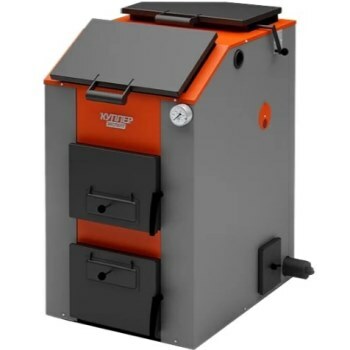
For this single-circuit solid fuel boiler of long burning with an open chamber they ask only a little more than for the previous one - about 57,500 rubles - but he knows much more. The maximum heating power of 30 kW gives a heated area of 300 sq.m. Steel heat exchanger, installation - floor. Both coal and wood will be used as fuel. To maintain the temperature, a heating element with a power of 9 kW is used, which can be powered both from a single-phase and from a three-phase network. Built-in thermometer and pressure gauge are provided.
Price: ₽ 57 500
Teplodar Kupper Expert-30 30 kW
The best solid fuel boiler with a water circuit
7. ZOTA Topol-32VK 32 kW
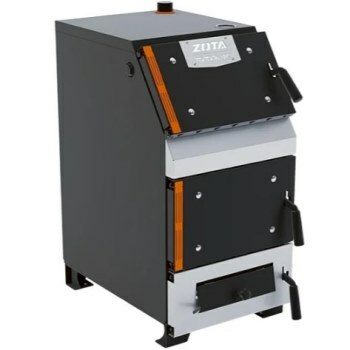
A productive solid fuel boiler for long burning, made according to a single-circuit scheme and equipped with an open combustion chamber. Thermal power can be from 10 to 32 kW, the maximum area of the heated room is 320 sq. M. Non-volatile unit mechanically controlled does not require access to electricity, although it is possible to install an optional heating element to maintain temperature. Coal, coal briquettes, firewood, wood briquettes will be used as fuel for the boiler. With a price around 40,500 rubles, this is a very advantageous offer.
Price: ₽ 40 500
ZOTA Topol-32VK 32 kW
The best solid fuel boiler in terms of price / quality ratio for home and summer cottages
8. ZOTA Master 25 25 kW
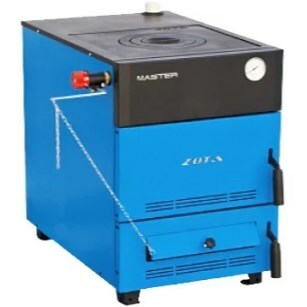
A boiler-stove combined with a hob, which will allow not only to heat the house, but also to cook dinner. Due to its versatility, it is perfect for installation anywhere in the country. Otherwise, this is a classic solid fuel single-circuit boiler with a maximum thermal power of 25 kW. The device is non-volatile, with mechanical control and an open combustion chamber. There is a possibility of an optional installation of a heating element to maintain the temperature. The efficiency of the device, however, is not great - only 73% - but at a price of less than 35,000 rubles, this unit remains one of the best offers on the market in terms of price and quality.
Price: ₽ 29 000
ZOTA Master 25 25 kW
FAQ
Why is the boiler not picking up temperature?
It's hard to say without diagnostics. The problem can be both in a malfunction of the boiler or its automation, and, say, in a clogged chimney and lack of draft. In addition, the power of the boiler may simply not be enough for the tasks that it faces. For example, a five-kilowatt boiler is not capable of heating two tons of coolant in pipes - an apparatus four times more powerful is needed here.
Why does the coal burn badly in the boiler?
And here, too, there may be various reasons. Firstly, coal may simply not be suitable for your boiler as fuel. Secondly, you can ignite it incorrectly, and coal requires a special approach - read the instructions for your equipment. Thirdly, are you sure that this is coal, and not painted crushed stone for landscape design? Check if it burns outside the firebox at all.

